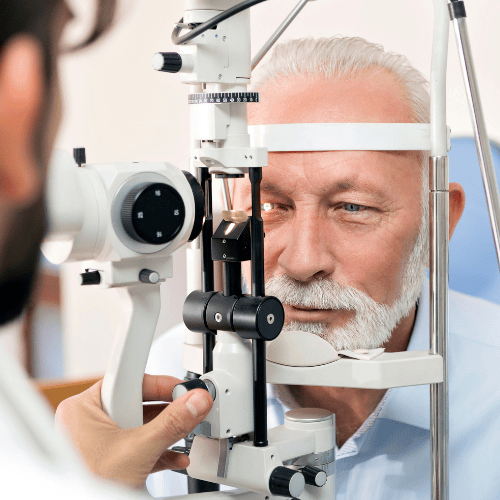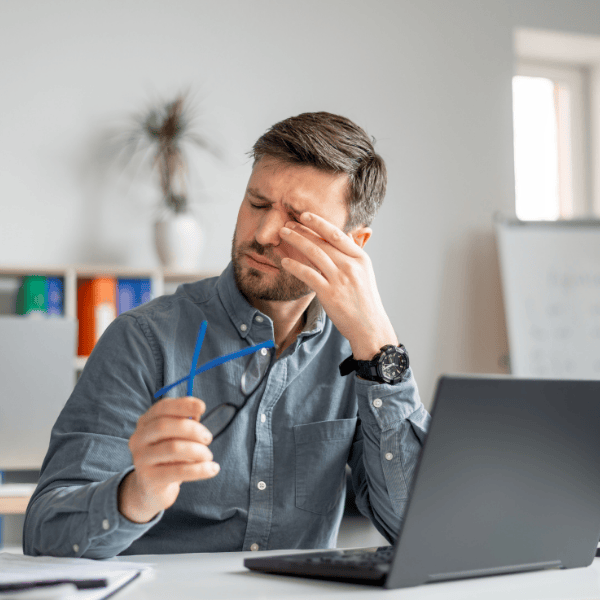COMPUTER VISION SYNDROME


Most people these days use more than one digital device every day, including smartphones, i.Pads, laptop or desktop computer and televisions. The current trend of spending an increasing amount of time on these devices comes at a cost. It is believed that 75% of people are currently suffering from Computer Vision Syndrome, also referred to as “digital eye strain”. This is often the result of the eyes focusing at one distance for an extended amount of time on an electronic monitor. There are a number of symptoms as a result of this extended exposure, including fatigue, blurry vision, headaches, irritated and red eyes, tearing and even neck and shoulder pain.
Eye fatigue is one of the most often-reported symptoms and usually due to the tiny eye muscles being over worked without a break. Another contributing factor is lighting. Lack of natural lighting, poor lighting, blue light and neon lights can all lead to glare and eye strain which will lead to fatigue.
Blurry Vision is another symptom resulting from excessive screen use. Because the eye muscles are often fatigued they are no longer able to focus for as long and therefore lose their flexibility. Sufferers will often find their distance vision is temporarily reduced. Blurry vision can also be the result of dry eyes, which occurs when the surface of the eye becomes compromised – often a result of irregular or incomplete blinking while staring at electronic monitors. An unhealthy corneal surface can lead to other symptoms such as discomfort, irritation and watery eyes. The severity of symptoms seems to be correlated with the amount of time exposed to the digital device.
It is important to have a comprehensive eye exam with an optometrist because of the number of vision correction problems and age related problems that can contribute to Computer Vision Syndrome. Problems with eye teaming, focusing, incorrect eyeglass or contact lens prescriptions, can all contribute to symptoms. An undiagnosed eye disease may interfere with the eye’s ability to transmit a clear signal to the brain – many eye diseases will have minor or absent symptoms in their early stages.
Using the proper type of eyeglass lens can make a big difference in whether or not someone is likely to suffer from Computer Vision Syndrome. It is important to be wearing the most up to date prescription but it is equally as important to have the correct type of lens for your specific work needs. Depending on the type of prescription, up to 50% of the performance of a pair of glasses may be due to lens type, proper fitting of the frame and accurate measurements of where your eyes sit relative to the frame. Because most viewing and work done on digital screens require high precision even the smallest uncorrected prescription, eye health concern or measurement error can cause problems.
What can we do to prevent Computer Vision Syndrome? First, do what you can to reduce the total amount of screen time you are exposed to each day. If your work involves a lot of computers, try and do something else after work such as exercising or reading a book. While at your workstation remember the “20-20-20 Rule” – for every 20 minutes of screen time, look up for 20 seconds at something 20 feet away. This will reduce the strain in the eye muscles. It is also important to routinely visit your optometrist to maintain good eye health, corrected vision and monitor for potential age-related vision problems. We also do advanced dry eye testing to determine specific treatments depending on the cause. When it comes to glasses, the vast number of lens options available means it is important to advise your optometrist and optician of your work habits, work conditions and current symptoms. Office lenses and antifatigue lenses with blue light protection are examples of specific lenses that are used to reduce computer vision syndrome.
-Dr. Alanna Adams, O.D.











